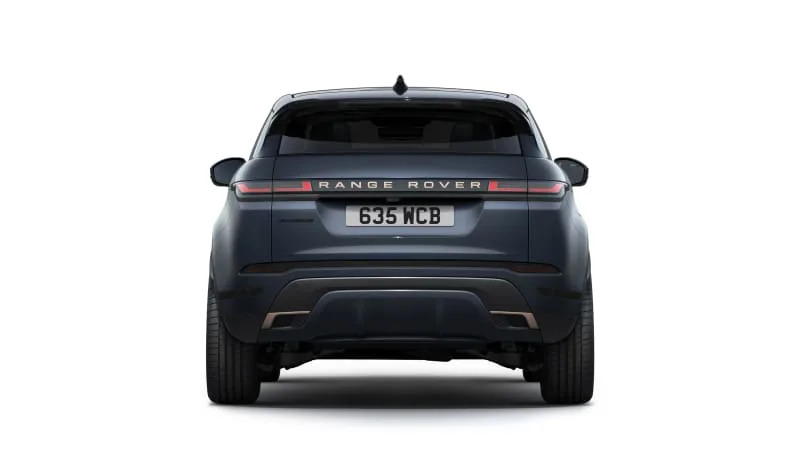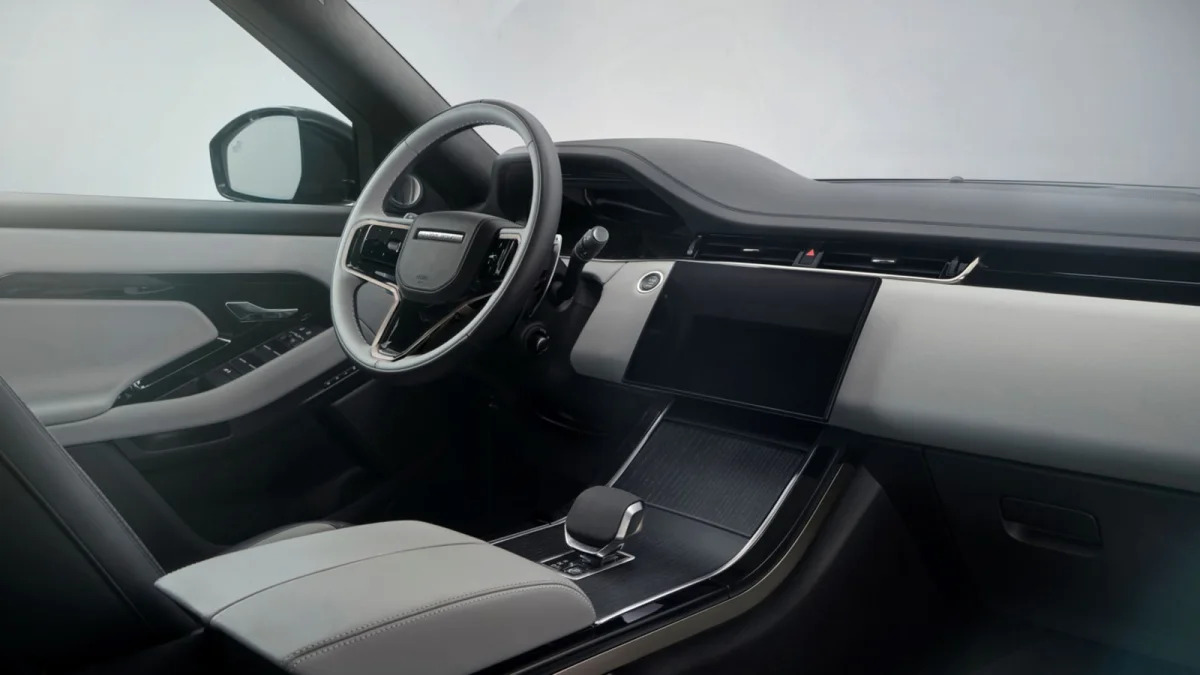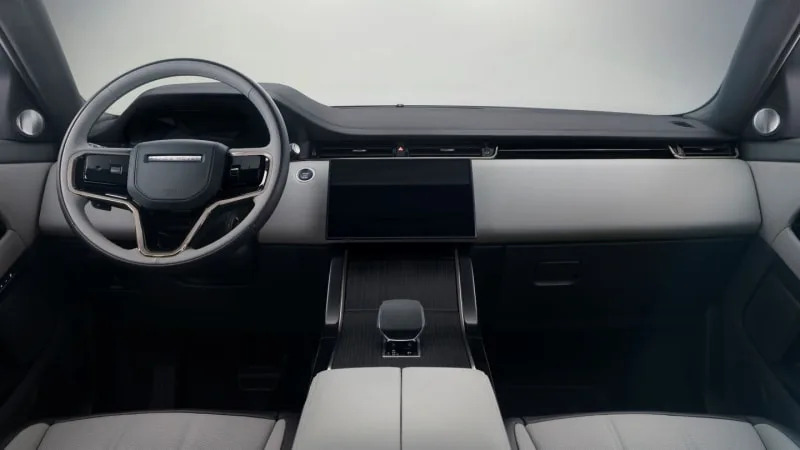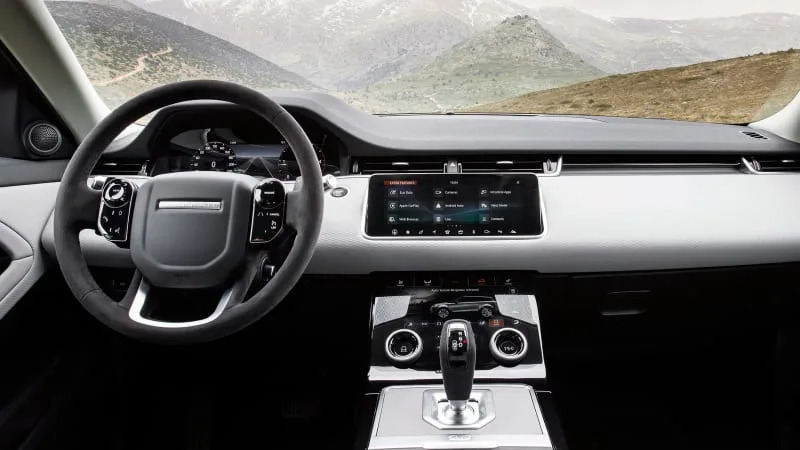EPERNAY, France – When Land Rover introduced its smallest SUV for 2012, the en vogue Range Rover Evoque aspired more to the citified, reservations-at-eight lifestyle than any traditional “Landie” ethos. Today, the rest of the Range Rover brand has effectively followed its lead, as JLR (Jaguar Land Rover) creative director Gerry McGovern has sidelined the “Land Rover” name altogether in favor of a “House of Brands” strategy that will more clearly differentiate the SUVs named Defender, Discovery and Range Rover.
Now in its second generation, the Evoque is revised for 2024 (along with the 2024 Velar, which we’ll review separately), and it offers some welcome clarity as to what we can expect from the Range Rover wing of this House of Brands. The “Range Rover” script still runs across the Evoque’s unblemished brow, offering assurances of status despite shrink-wrapped proportions. The Land Rover badge has been removed from its tail. And with Evoque sales gone soft in the face of stronger small-SUV competition – from a U.S. high of about 14,600 units in 2015, to 6,022 last year – designers used the mid-cycle upgrade to home in on the Evoque’s best qualities: inimitable Range Rover design, refinement and off-road ability, whether mud actually splatters the fenders or not.
The Evoque has always been a handy mobile Rorschach test, eliciting one of two reactions: First, “That’s way too small for an SUV. Who would buy one?” Secondly, “That’s the sweetest SUV I’ve ever seen. Where can I get one”?
To answer the first group and explain the second, “Design, style and brand image top the list of purchase drivers” among all Evoque buyers, said Land Rover communications manager Joe Staubel. He continued that the Evoque is notably popular among women, who consist of 62% of total buyers, versus the luxury car average of 41%. The Evoque also draws a robust mix of ethnicities, including 12% Black buyers and 16% Latin American.

Because of those unapologetic good looks (and the condescending men who view “popular with women” as a damnable offense), a common misconception is that the smallest Rover is some dilettante or toy. In fact, the Evoque is far more capable off-road than any of its subcompact kin from Europe or America, closer in spirit and skill to a Jeep Cherokee than a typical crossover softie. The fact that few owners will test those capabilities is no reason to dismiss them outright, in part because chassis solidity and versatile suspension tuning also pay on-road dividends. There’s a healthy 8.3 inches of ground clearance, nearly matching the 8.7 of a Cherokee Trailhawk or Subaru Outback. There are useful approach-and-departure angles and a surprisingly robust, on-demand AWD system. An available magnetic suspension monitors the roadway, and adjusts shocks near-instantaneously on any surface.
The Terrain Response 2 system offers a full range of off-road settings, including Grass/Gravel/Snow and Mud/Ruts, abetted by Hill Descent Control and All-Terrain Progress Control. Consider the latter an adaptive cruise control for the rougher stuff. And the Evoque can ford 23.6 inches of water, as thigh-deep as a Land Rover Discovery.
For 2024, the Evoque doesn’t change much outside, beyond adoption of the latest Range Rover family grille. Super-slim LED headlamps maintain their below-1-mm panel gaps, with tight gaps all around a key to its smooth-skinned visage. Three new paint colors include a Corinthian Bronze on the Evoque we drove, which paired beautifully with freshly harvested vineyards and painterly fields of the Champagne region. (Come to think of it, a deeply aged vintage champagne, like one I later sampled in Veuve Clicquot’s miles-long network of underground caves, verges on this paint shade). Arroios Gray and a rich Tribeca Blue round out the new paints. The Evoque’s signature rakish floating roof, which tumbles toward a fast-rising, unbroken waistline – leaving an Audi Q3, BMW X1 or Mercedes GLA looking dowdy in comparison – can also be had in Corinthian Bronze or Narvik Black. Eight wheel options, with five new finishes, include sharp 21-inch diamond-turned alloys.
Tug the Evoque’s flush, deployable door handles, and you’ll find bigger upgrades inside. McGovern liberally applies his “reductive luxury” philosophy that has lately shored up the Range Rover’s and Rover Sport’s claims to design supremacy in any SUV shy of the ultra-luxury crowd. And honestly, I’d take the latest, decked-out Range Rover in a heartbeat over any of the Johnny-come-latelies, whether a Rolls-Royce Cullinan, Bentley Bentayga or Mercedes-Maybach GLS 600. That modernist philosophy involves stripping away anything extraneous, and curtaining the rest in creamy, stroke-able finishes and tasteful details that designers clearly sweated over. The unified whole – at its Range-y best – recalls a five-star London hotel suite, or maybe the overpriced watch boutique downstairs.

The Evoque S’s $51,075 base price, or $56,075 for a Dynamic SE model, prevents it from reaching quite those brand heights, despite a sobering $4,900 price hike for 2024. Still, the Evoque’s upgraded interior is barely a step below the pricier Velar’s. A massive panoramic roof flatters the cabin with natural light, highlighting new Moonlight Chrome trim on a redesigned steering wheel, center console and vents. Non-leather Kvadrat (wool blend combined with polyurethane textiles) seat options join traditional leather upholsteries. Newly available trim finishes include anodized aluminum in light or dark coatings. The “little back window that no one can see out,” as McGovern quipped at the Evoque’s 2020 redesign, is still there. An available camera-based rearview mirror again expands the constricted view. The back seat remains useable but a touch confining, and cargo space is comparable to its subcompact competitors (we’ve managed to fit five sizable suitcases on board).
A reworked center console is topped by big brother Range Rover’s shift lever for the nine-speed automatic transmission, flanked by a conjoined pair of soft armrests. The sleek console curls up to meet a new, 11.4-inch pane of curved glass. That touchscreen houses the massively improved Pivi Pro system, which addresses at least a decade of dead ends and false starts for JLR infotainment units. Amazon Alexa is embedded, and the system supports wireless Apple Car Play, Android Auto, device charging, and of course, OTA updates.
Though that screen is bigger, the screen below it that used to control the climate controls and other vehicle functions has disappeared entirely, having handed over its constituents to the expanded upper screen and its real estate seized by a covered bin. The climate control’s physical knobs and the volume knob have also been evicted, leaving onscreen sliders in their place for you to shakily poke at while taking your eyes off the road. There will be complaints, but at least a “pre-drive panel” offers fast access to features such as window defrosters and heated seats when starting the Evoque before giving way to a mostly intuitive three-panel arrangement of functions.


2024 Interior (left) with the original design (right)
While traditional, analog touch points were largely sheared, so were the powertrain choices. Say goodbye to the 296-horsepower P300 model, leaving only the P250 and its 246-horsepower turbocharged inline-four. One other blind spot: Our original media invite offered a chance to drive new plug-in hybrid versions of the Evoque and Velar, with the clear assumption – especially in the face of JLR’s electric ambitions – that we’d be sampling PHEVs bound for our shores. But those electrified Rovers were AWOL, and executives regrettably said they will not join the U.S. lineup.
Despite those disappointments, our Evoque P250 Dynamic SE was an enjoyable companion, beginning with its dead-solid chassis that blends high-strength steel, aluminum and magnesium. The current, second-gen Evoque banished the groaning and moaning powertrains of the original version. That 246-hp turbo-four won’t match, say, a BMW X1 xDrive28i’s 6.3-second run to 60 mph, but roughly 7.0 seconds isn’t bad. Some drivers might want a touch more grunt for freeway merges or passing. But the Evoque cruised quietly and confidently at 90 mph and more on French highways.
In the rustic French countryside, we rolled past Saint-Rémy, where Van Gogh spent some quiet asylum time painting works such as – appropriately here – “The Road Menders.” Fields of sunflowers also abound, in various stages of autumnal decay, but Van Gogh actually painted those impressionist petals in Arles, farther south in France. On this rumpled, no-shoulder French pavement – more country terrine than creamy pate – the Evoque pogos more, and is less serene overall, than the longer-wheelbase Velar we drove the previous day. Yet the Evoque’s fluid handling, body control and NVH underline its legitimacy in the luxury ranks. The Rover won’t slash through corners like a BMW X1 or X2, but wouldn’t it be unfair to expect it to given the off-road hardware and ground clearance? Would we criticize the BMWs for not being able to ford a river?
From its $56,075 base price, an assortment of options lifted our li’l Evoque Dynamic SE to $62,915. The roughly $51,000 Evoque S base model starts from about $8,000 more than a BMW X2, though the Evoque is much better equipped in base form. Either way, the Evoque is as premium as any petite SUV, especially after that nearly $5,000 price jump. If the Evoque’s aesthetic meets your discerning standards, and the payments get you down, just staring at it in the driveway may cheer you up.
